Videos—2MJ: Philippi Region
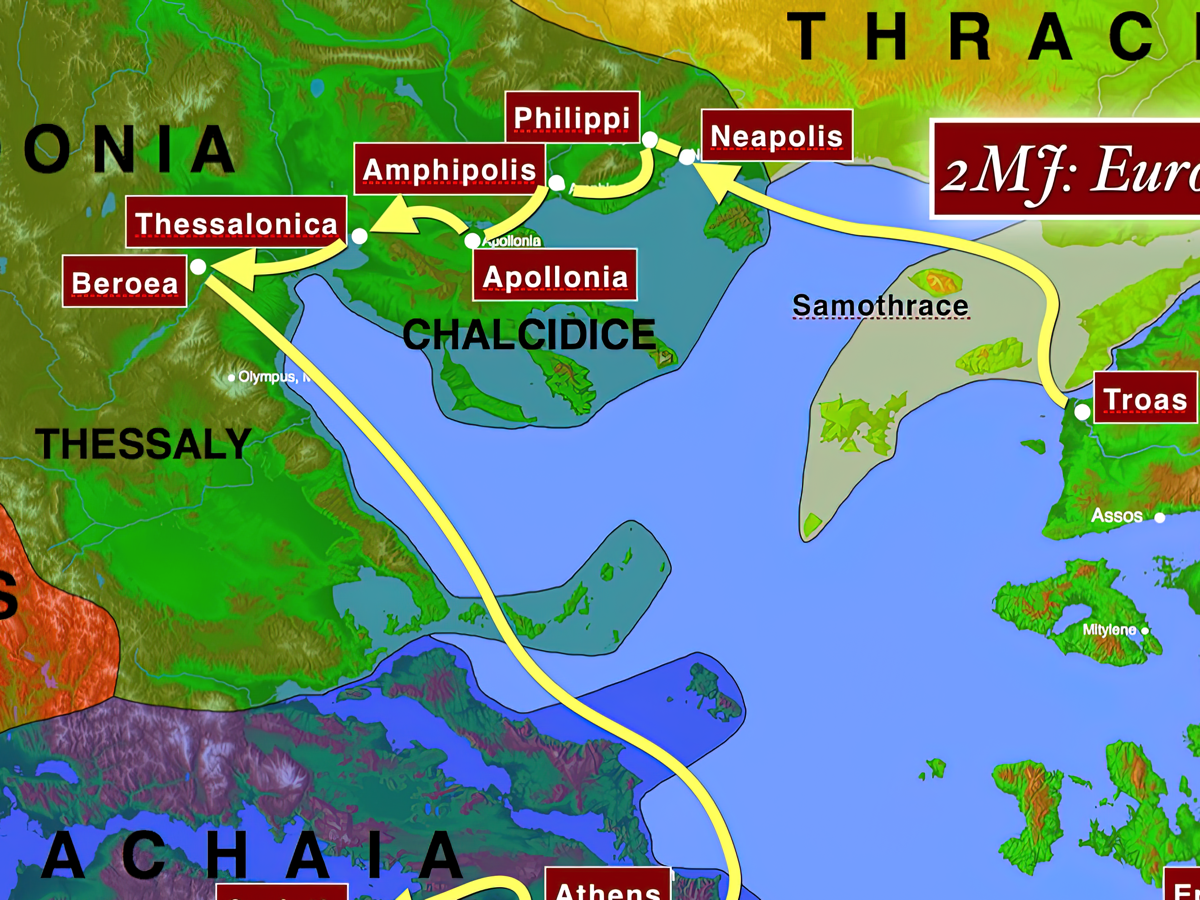
-
Macedonia—Neapolis
Ancient Neapolis is modern Kavala, a bustling port city of eastern Macedonia on the Bay of Kavala opposite the island of Thasos. The ancient Roman highway system, called the Via Egnatia, cut across Macedonia through Thessalonica, Apollonia, Amphipolis, and Philippi, and landed in the seaport of Neapolis. Paul and company put in to port here after the vision at Troas finally kicked off the second missionary journey in earnest, putting Paul back on track with God’s will. The trip inland to Philippi, the first major stop of the second missionary journey, would have been a short walk from this port city.

-
Macedonia—Philippi
-
Philippi: Hotel Philippeio
We made a wonderful discovery of the Hotel Philippeio perched on a mountainside overlooking Krinides, the modern city to which the ancient site of Philippi lies nearby. We checked in right at dusk. Spectacular view of the valley lighting up below.
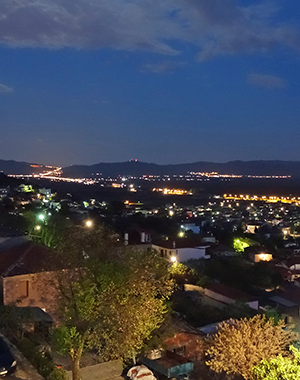
-
Philippi: Roads, Modern and Ancient
The main highway coming out of Krenides actually runs right on top of, or directly parallel to, the Via Egnatia, the ancient Roman highway connecting Philippi and Thessalonica. From the modern highway, you can see the ancient theater of Philippi carved into the mountainside.

-
Philippi: Archeological Site
After the Troas vision on the coast of modern Turkey, Paul sailed across to enter Europe and the province of Macedonia at the port of Neapolis. Philippi was a morning’s walk from the port. The site of ancient Philippi spills down the mountainside from the theater. From the top of the theater, one can see the ancient Roman forum across the modern highway that cuts through the middle of the site. The modern highway runs parallel to the ancient Roman road, called the Via Egnatia.
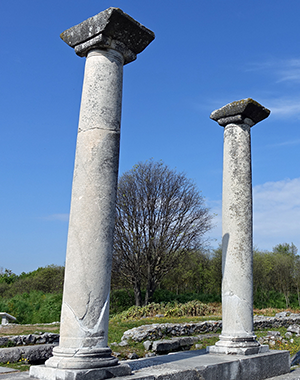
-
Philippi: Underground Latrine
The latrine at Philippi is most unusual for it underground location. Most Roman latrines were at ground level right off a main street. The latrine at Philippi was underground. One had to travel down a flight of stairs and down a short hallway to reach the entrance to the latrine.
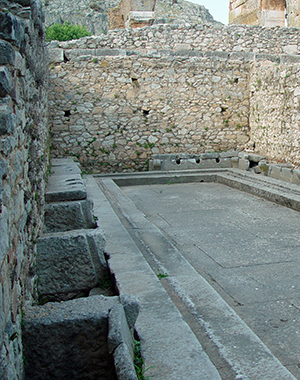
-
Philippi: Via Egnatia
The Via Egnatia was the Roman interstate of the day. This highway was the main east-west route traversing Macedonia and other provinces on the way to Constantinople. The road was built to facilitate the movement of Roman legions eastward. Thessalonica and Philippi were connected by this Via Egnatia, which went right through the middle of these two cities of Macedonia. Even today one can see remnants of the Via Egnatia in downtown Thessalonica, as well as running alongside the forum of ancient Philippi.
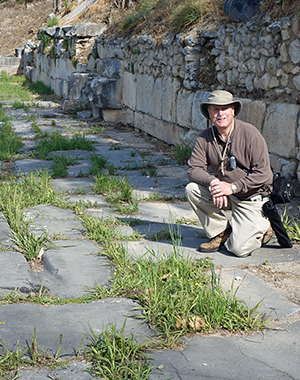
-
Philippi: Paul's 2MJ Visit
Philip II of Macedon, father of Alexander the Great, greatly enlarged the city of Philippi, including the theater seen today, to enhance commercial trade in Macedonian gold. A significant population of Roman veterans later were settled in this city, their reward for fighting in the famous battle of Philippi (42 B.C.). This battle ended the second triumvirate. Forces under Mark Antony and Octavian defeated the alliance of Brutus and Cassius, co-conspirators who had assassinated Julius Caesar. Thus, Philippi socially and politically was heavily Roman. The city received further Roman high honor and status when declared a “free city” of the empire, that is, the highly coveted right of independent rule as long as they prospered Rome and kept the peace. This Roman historical, military, political, and social background of the city is crucial for understanding the forces in play controlling the course of events during Paul’s missionary visit to the city on the 2MJ. Roman Philippi explains why the city had no synagogue in which Paul could evangelize first, as was his mission strategy (Rom 1:16). Roman Philippi also explains why city rulers imprisoned Paul on a hair-trigger the moment he was accused of political sedition.
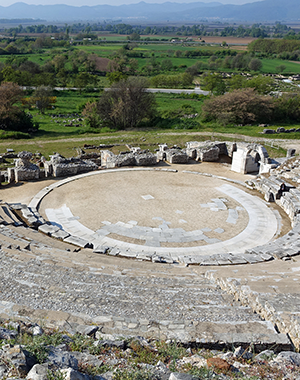
-
Philippi: Lydia, Purple Dealer
Philippi was so Roman not even ten male Jews resided there to qualify for the building of a Jewish synagogue. A group of women met for worship down by the riverside outside the city gate. Of these was Lydia, a dealer in the exclusive and lucrative trade of imperial purple. This trade required an imperial license, so Lydia had notable elite, aristocratic connections. Lydia actually was a resident of Thyatira, near Pergamum in Asia Minor. Philippi, then, would have been her second residence. She was converted on a sabbath after Paul and company had joined the group by the river for worship. She then offered her home as lodging to Paul and his group. This offer would have conformed to the patron-client social structure of the ancient world. Lydia, that is, would have become Paul's patroness, or sponsor, in Philippi.
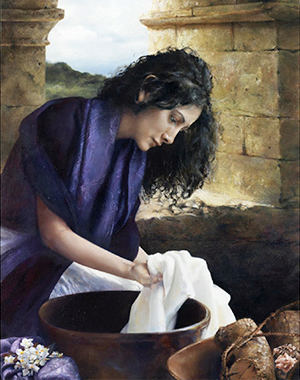
-
Philippi: Hotel Philippeio
-
Macedonia—Amphipolis/Apollonia
Luke mentions Amphipolis and Apollonia as Paul made his way from Philippi to Thessalonica on the second missionary journey. These cities were main stops along the Macedonian royal road in this region that later became part of the Roman Via Egnatia highway. The Lion of Amphipolis is a famous tomb monument, probably marking the grave of Laomedon, a general and close associate of Alexander the Great.
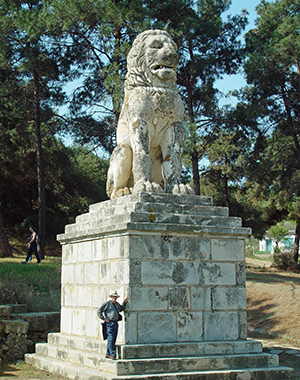
Videos-2MJ > Asia Philippi Thessalonica Berea Athens Corinth
Videos > Videos-1MJ Videos-2MJ Videos-3MJ Videos-4JR Videos-Rev